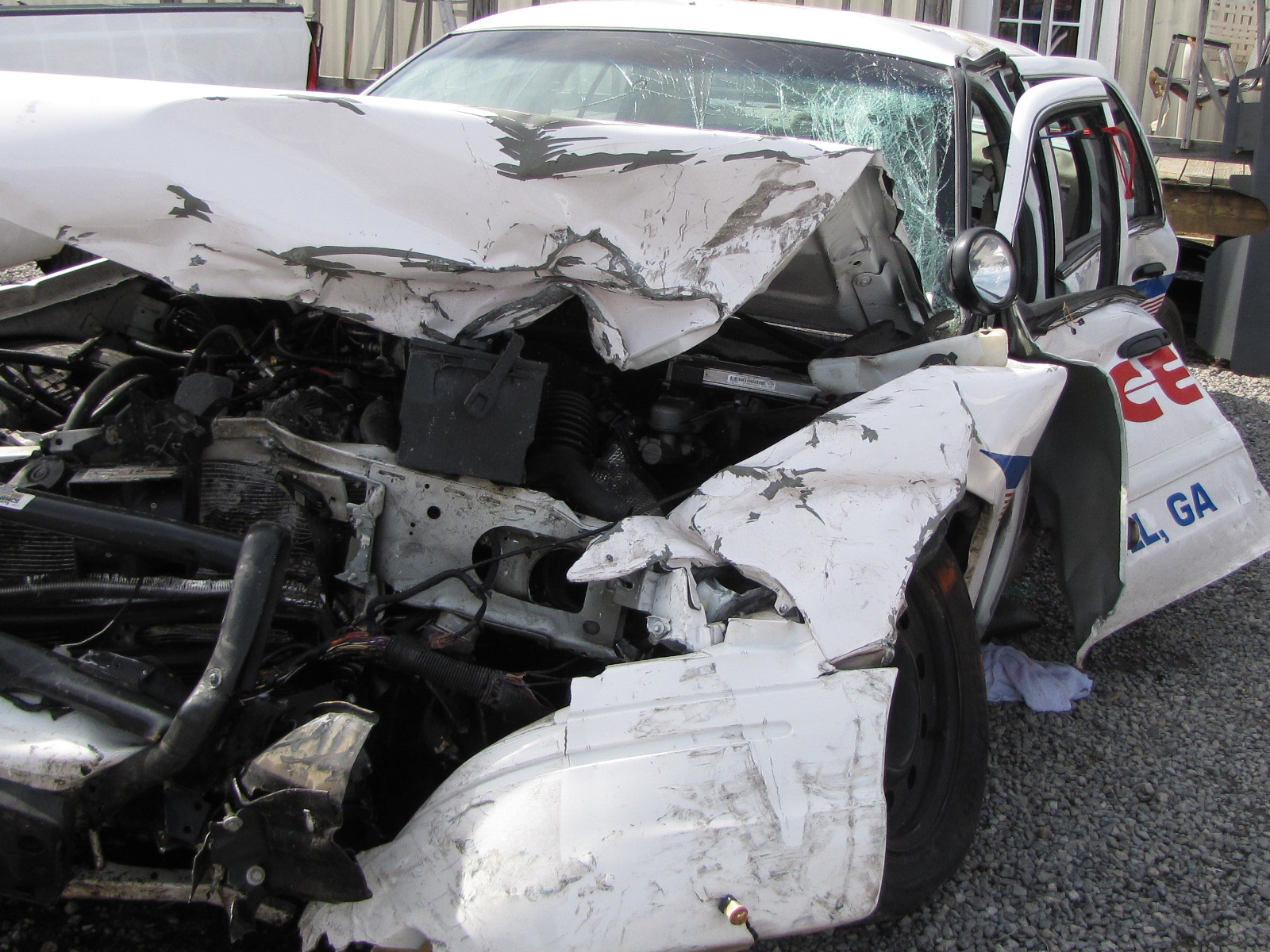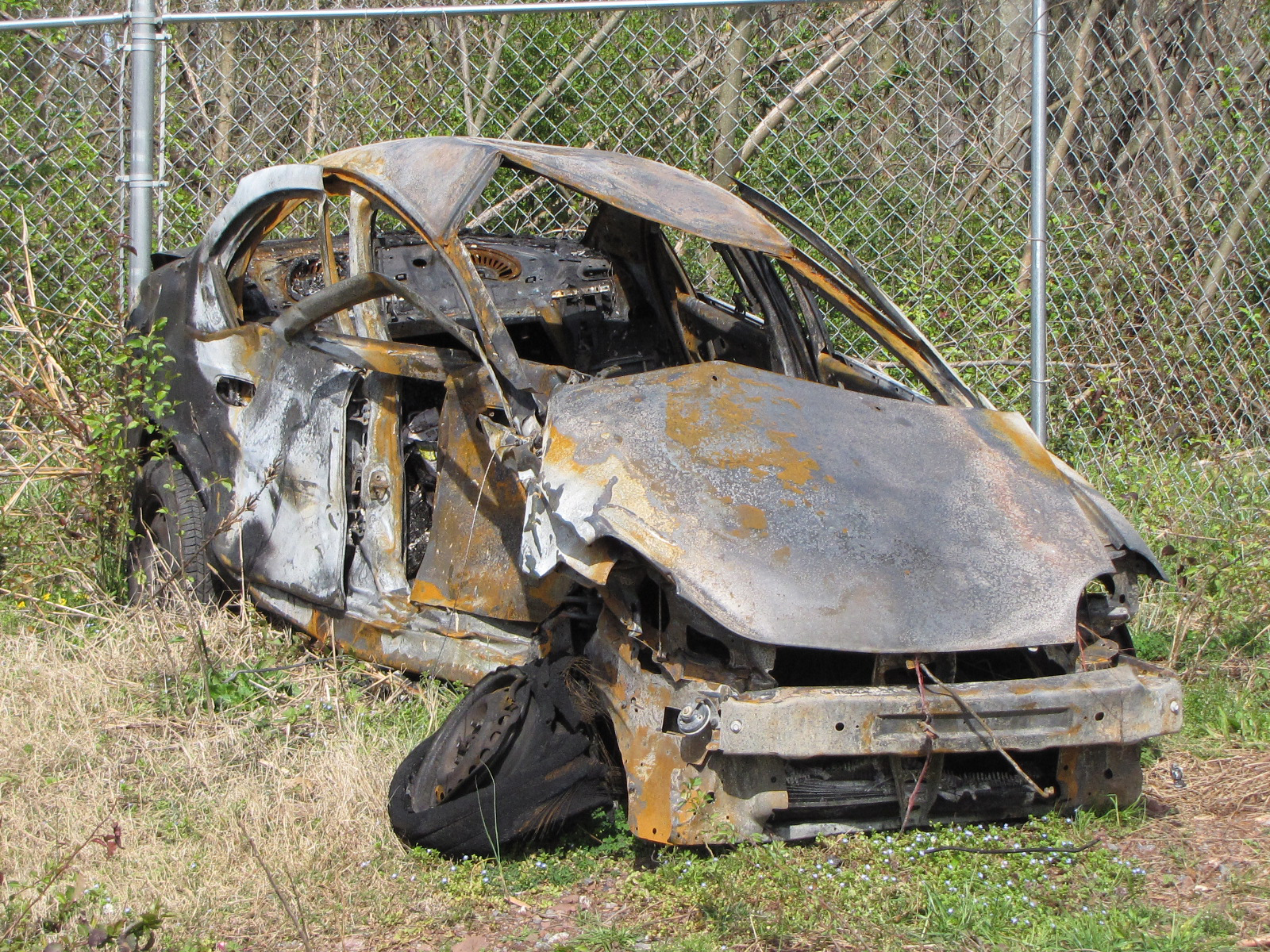Tennessee crashes involving officersYear Fatal Injury2009 // 2 // 5822010 // 4 // 5272011 // 4 // 637Source: Tennessee Highway PatrolGeorgia crashes involving officersYear Fatal Injury2010 // 2 // 287(Officer likely at fault in no deaths, 121 injuries.)Year Fatal Injury2011 // 3 // 533(Officer likely at fault in 1 death, 288 injuries.)Source: Georgia Department of Transportation
When Leon Thurman's car was struck broadside by a Varnell police car two months ago, he became at least the sixth person in the last 21/2 years to die in a crash involving a Georgia police officer.
Hundreds of people are injured every year and an average of two to three people are killed in police-involved crashes in Georgia as well as Tennessee, numbers from both states show. These numbers don't distinguish whether the officer or the other driver was killed or injured.
But Georgia Department of Transportation figures indicate that police likely were to blame in more than half of the 2,000-plus officer-involved crashes across the state last year.
And statistics from the Tennessee Highway Patrol show that more property damage and injuries from officer-involved crashes in Tennessee occur when officers are not responding to an emergency.
Nationally, 123 people died in 2009 from crashes involving a police vehicle, but only 33 deaths happened when blue lights and sirens were on for an emergency response, federal figures show.
Police records show that former Varnell Officer James Smith was not responding to a call and his blue lights were not on when his cruiser struck Thurman's Dodge Neon. Thurman, 70, was crossing Cleveland Highway as he delivered newspapers on his regular route.
Smith resigned, but the accident is still under investigation by the Georgia State Patrol.
A civil suit filed by Thurman's family contends that Smith was driving at least 90 mph in the 45-mph zone when he struck the Neon.
"If more officers knew about [Thurman's death] maybe they'll think about it and drive a little more cautious when it's not an emergency," said Thurman's son, Michael.
But police say officers are often the ones hurt by drivers who aren't paying attention to the road or don't hear the sirens blaring.
"That's a challenge law enforcement [has]," said Tennessee Highway Patrol Lt. John Harmon.
•••
In April, East Ridge police Officer Sean Merriman was placed on paid leave after the vehicle he was driving struck a parked truck and he left the scene, officials said. He was given a traffic citation for the off-duty accident, but the East Ridge Police Department is now conducting its own internal affairs investigation.
As far as prosecuting authorities are concerned, an officer who breaks a traffic law is considered a citizen when he or she is off duty and in their own vehicle, said East Ridge Police spokesman Officer Erik Hopkins. But the police department has policies for officers on and off duty.
In 2011, 20 police vehicles in Hamilton County were involved in injury-related crashes, including 13 when an officer was not responding to an emergency, THP numbers show.
Georgia counted 2,422 crashes involving police vehicles in 2011, and police were likely at fault in nearly 1,400, numbers from the Georgia Department of Transportation show. Of those crashes, 533 resulted in injury and more than half were likely caused by the police vehicle. In fatality crashes for the year, two of the three deaths were likely the fault of the civilian vehicle involved, GDOT indicated.
The most common reasons for crashes were following too closely and misjudging the room the driver had to clear an object.
But police say officers are trained to drive in distracting situations and handle chases.
These state numbers don't take into account the deaths from police pursuits, which is a much higher number. And in Georgia, officials are considering whether officers need more training for emergency situations on the road.
•••
In another April case that began in Tunnel Hill, Ga., a 14-year-old runaway led police on a high-speed chase up Interstate 75, leaving in his wake three disabled law enforcement vehicles and one injured deputy. Before fleeing, the teen fired shots at police.
Police say officers have to weigh the safety concerns in high-speed chases and emergency response. And they are trained on how to recognize when adrenaline is taking over and to use good judgment, said Bill Bryant, deputy director of training at the Georgia Public Safety Training Center.
"We are all human beings, even if we are wearing a badge," he said.
National statistics show that Georgia has almost double the number of wrecks involving deaths during a police chase each year than Tennessee does.
That's nearly 17 for Georgia and nine for Tennessee, based on 10 years of statistics from the National Highway Traffic Safety Administration.
Police pursuit fatalities are often single-vehicle accidents caused by the fleeing driver. These numbers are classified differently than officer-involved wrecks, which involve actual contact with the police vehicle, state officials said.
In Georgia, training for driving in dangerous scenarios is required only when an officer goes through the police academy. More advanced training is offered, but it's only required for state troopers, Bryant said.
But after a state trooper on a call was involved in a wreck that killed the wife of an Atlanta Braves trainer on New Year's Eve, officials are now lobbying for more training, Bryant said.
Tennessee officers get annual driving training as part of their required 40-hour Peace Officer Standards and Training Commission requirements, said Christopher Garrett, a spokesman with the Tennessee Department of Commerce and Insurance.
That wasn't always the case. Lawmakers passed legislation in 2005 requiring annual training and to have sirens blaring when on an emergency call.
The act passed three years after a wreck involving a University of Tennessee at Chattanooga student who was struck and killed by a Chattanooga officer who drove through a red light with his lights on but not his siren.
•••
Investigators said officers who are at fault in a wreck are treated the same as anyone else. Investigators will make sure the officer was complying with traffic laws and, if responding to an emergency, with applicable regulations.
The laws in Tennessee governing emergency pursuit require that officers:
• Proceed through a red light or stop sign only after slowing down.
• Have audible and visible signs on when responding to an emergency.
The results of an investigation into an officer-involved crash are handed over to the district attorney in that circuit, who decides whether charges should be lodged.
Conasauga District Attorney Bert Poston said he would consider prosecuting any officer who violated the law and killed or maimed someone. He will receive Smith's case likely by the end of the month and said he will decide whether the officer should be prosecuted after he sees the evidence.
Officers who aren't responding to an emergency are expected to follow traffic laws, authorities said.
But Michael Thurman said he knows all too well that doesn't always happen. He gets angry when he sees officers going faster than the speed limit without their blue lights on.
"The majority of officers do what they are supposed to do, but it only takes one time," he said.

